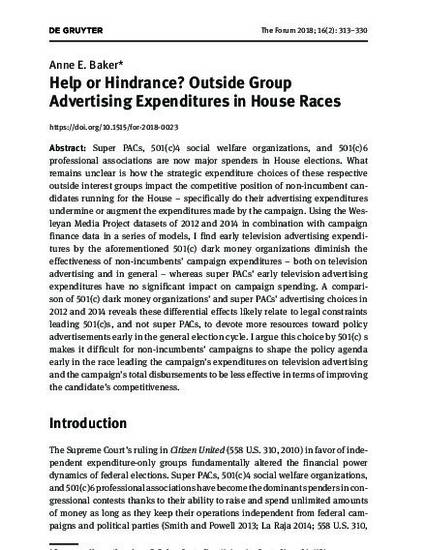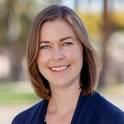
Super PACs, 501(c)4 social welfare organizations, and 501(c)6 professional associations are now major spenders in House elections. What remains unclear is how the strategic expenditure choices of these respective outside interest groups impact the competitive position of non-incumbent candidates running for the House – specifically do their advertising expenditures undermine or augment the expenditures made by the campaign. Using the Wesleyan Media Project datasets of 2012 and 2014 in combination with campaign finance data in a series of models, I find early television advertising expenditures by the aforementioned 501(c) dark money organizations diminish the effectiveness of non-incumbents’ campaign expenditures – both on television advertising and in general – whereas super PACs’ early television advertising expenditures have no significant impact on campaign spending. A comparison of 501(c) dark money organizations’ and super PACs’ advertising choices in 2012 and 2014 reveals these differential effects likely relate to legal constraints leading 501(c)s, and not super PACs, to devote more resources toward policy advertisements early in the general election cycle. I argue this choice by 501(c) s makes it difficult for non-incumbents’ campaigns to shape the policy agenda early in the race leading the campaign’s expenditures on television advertising and the campaign’s total disbursements to be less effective in terms of improving the candidate’s competitiveness.

Copyright © 2018 Walter de Gruyter GmbH. Reprinted with permission.